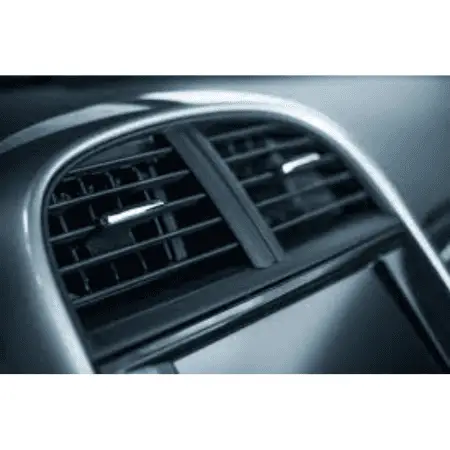In every car, the blend door actuator plays a crucial role in regulating the temperature and airflow within the cabin. If you’ve ever experienced inconsistent heating or cooling in your car, the Blend Door actuator might be to blame. So in this article, we will discuss how to know if blend door actuator is bad of a car. So keep on reading…
How to know if blend door actuator is bad? To tell if a blend door actuator is bad, you can listen for strange noises coming from your car’s dashboard when you adjust the temperature or air direction. If you hear clicking, tapping, or grinding sounds, it might indicate a problem. If the air coming out of the vents doesn’t match the temperature you’ve set, or if it fluctuates between temperatures, it could indicate a problem with the actuator.

What is a blend door actuator?
A blend door actuator is a small motor in your car’s heating and cooling system that controls the direction and temperature of the air that comes out of the vents.
Inside your car’s dashboard, some doors control where the air goes and how hot or cold it is. The blend door actuator is a small motor that moves these doors around according to what you set on the temperature and vent controls.
When you adjust the temperature or choose where the air should go (like to your face or feet), the blend door actuator swings into action, opening and closing doors to make sure the air flows where you want it and at the right temperature.
Signs of a Bad Blend Door Actuator
1- Inconsistent Temperature Control
One of the most common signs of a failing blend door actuator is inconsistent temperature control. You may notice that your car’s interior temperature doesn’t match the setting on the thermostat. For example, cold air may blow out of the vents when you’ve set the temperature to hot, or vice versa.
2- Unusual Noises
Another indicator of blend door actuator problems is the presence of unusual noises coming from the dashboard area when you adjust the temperature or airflow settings. These noises can range from clicking or tapping sounds to grinding or buzzing sounds, signaling internal mechanical issues within the actuator.
3- Inability to Change Airflow Direction
A malfunctioning blend door actuator may also prevent you from changing the direction of airflow within the cabin. You may find that no matter which vent setting you choose (e.g., face, feet, or windshield), the air continues to flow from one direction only, or it may not flow at all.
4- Failure of the HVAC System to Respond
Lastly, if your car’s HVAC system fails to respond altogether, it could be due to a faulty blend door actuator. You may press buttons on the climate control panel, but the system doesn’t produce any changes in temperature, airflow, or fan speed, indicating a more severe problem with the actuator or HVAC system as a whole.
5- Faulty Controls:
Sometimes, the problem isn’t with the blend door actuator itself but with the controls on your car’s dashboard. If you notice that the buttons or knobs you use to adjust the temperature or airflow feel loose, don’t respond consistently, or seem to be malfunctioning, it could indicate an issue with the blend door actuator or other components of the heating and cooling system.
These signs collectively suggest that the blend door actuator in your car may be malfunctioning, affecting your ability to control the temperature and airflow effectively.

Causes of Blend Door Actuator Failure in a Car
Wear and Tear: Like many mechanical parts, blend door actuators can wear out over time due to regular use. The constant movement of the doors inside the heating and cooling system can cause the internal components of the actuator to wear down, leading to failure.
Electrical Issues: Blend door actuators are powered by electricity, and any problems with the electrical system in your car can affect their operation. This includes issues such as blown fuses, corroded wiring, or faulty connections, which can disrupt the flow of power to the actuator and cause it to malfunction.
Overloading: Sometimes, blend door actuators can fail if they’re asked to do too much. For example, if you frequently adjust the temperature or airflow settings while driving or if you frequently switch between different airflow directions, it can put extra strain on the actuator and lead to premature failure.
Environmental Factors: Exposure to extreme temperatures, moisture, and other environmental factors can also contribute to blend door actuator failure. For example, extreme heat can cause the plastic components of the actuator to warp or degrade over time, while moisture can lead to corrosion of the electrical connections.
Poor Maintenance: Regular maintenance of your car’s heating and cooling system, including cleaning and lubricating the blend door actuators, can help prevent premature failure. If these components become dirty or clogged with debris, it can hinder their movement and cause them to wear out faster.
Manufacturing Defects: In some cases, blend door actuators can fail due to manufacturing defects or design flaws. This could include issues such as weak materials, improper assembly, or inadequate testing during the manufacturing process, which can lead to premature failure of the actuators once they’re installed in the vehicle.
Sometimes, blend door actuator failure can be caused by a combination of factors, including normal wear and tear, electrical problems, environmental factors, and poor maintenance. By understanding these common causes, you can take steps to prevent premature failure and ensure that your car’s heating and cooling system remains in good working condition.

Diagnosing Blend Door Actuator Issues
Diagnosing blend door actuator issues involves a few steps: You can follow these steps to diagnose the problem.
Listen for Unusual Sounds: Start your car and adjust the temperature or airflow settings. Listen for any unusual sounds coming from the dashboard area, such as clicking, tapping, or grinding noises. These sounds can indicate that the blend door actuator is having trouble moving the doors inside the heating and cooling system.
Check Temperature Consistency: Set the temperature to a specific level, and see if the air coming out of the vents matches that temperature. If the air remains too hot or too cold, or if it fluctuates between temperatures, it could be a sign of a faulty blend door actuator.
Test Airflow Direction: Adjust the airflow direction settings to see if the air is directed to the correct vents. If the airflow always seems to come out of the same vents, regardless of the setting you choose, it could indicate a problem with the blend door actuator.
Inspect Controls: Check the buttons or knobs on your car’s dashboard that you use to adjust the temperature and airflow settings. Make sure they respond properly and don’t feel loose or malfunctioning. Issues with the controls could point to problems with the blend door actuator or other components of the heating and cooling system.
Scan for Error Codes: If your car is equipped with onboard diagnostics, you can use a diagnostic scanner to check for any error codes related to the heating and cooling system. These codes can provide valuable clues about the source of the problem, including whether it’s related to the blend door actuator.
By following these steps, you can effectively diagnose blend door actuator issues and take the necessary steps to address them, ensuring that your car’s heating and cooling system functions properly.
Must Read
- Why My Car Won’t Accelerate But RPMs Go Up? Explained
- Why All My Gauges Stopped Working While Driving & What To Do?
- Airbag Light Comes On And Off While Driving – Reasons & Solutions
Conclusion
A malfunctioning blend door actuator can significantly impact the comfort and functionality of your car’s HVAC system. By recognizing the signs of a bad blend door actuator, diagnosing issues promptly, and following the necessary steps to replace the faulty actuator, you can ensure that your car’s climate control system operates smoothly and efficiently.
